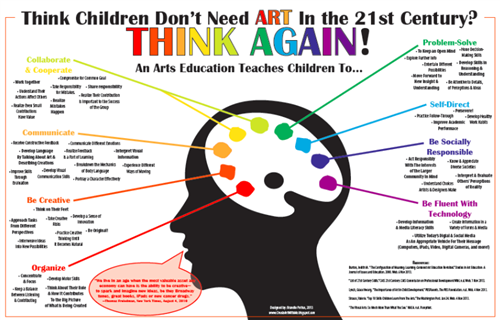November, 2019
now browsing by month
Arts Integration – Good or Bad?
Have you recently heard a lot about bridging learning by connecting student learning outcomes across disciplines? This seems to be all the latest language across the pedagogy stage. Believe it or not, as art educators, we have been doing this for centuries!

Art education is a discipline that not only enhances creative thought and the ability to abstract answers from complex experiences, we also use multiple disciplines and content areas as part of our strategic tool belt. This is not to be misinterpreted as an arts integration model where visual arts constructs are brought into the content area classrooms as interventional strategies or enrichment activities. That is very valuable as well, but we want to celebrate the arts as a stand-alone course.
Instead, it is time for us to deliberately inform our students of the information behind the curtain –what are materials or why materials work in their own particular ways. Not just a crayon, it is a low melting point wax that with slight friction can transfer onto a sheet of paper.
In addition, we need to inform our students about the importance of history, culture, and diversity play in particular art forms. As artists, we use math all of the time. Explain this to your students, even kindergartners can learn that we need to add and subtract when creating certain things. High school students should understand probability and predictions and their outcomes.
Thank you to the STEAM movement for reinforcing our place value in the educational system. I know that it is a lot of work on the back end to incorporate this into a paper trail, but administrators will be highly pleased with your work. And ultimately, students will benefit from these connections.
The SAS portal has several resources regarding these practices. In addition, The Kennedy Center has some amazing resources regarding arts integration. You may also benefit from articles regarding “what arts integration is not…” Enjoy!

Please contact Dr. Stacy Potter, PAEA Advocacy Chair for more information.

 D5 Creation
D5 Creation